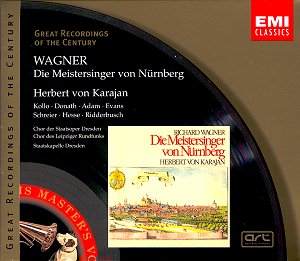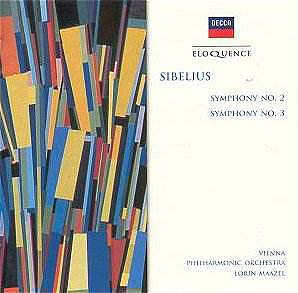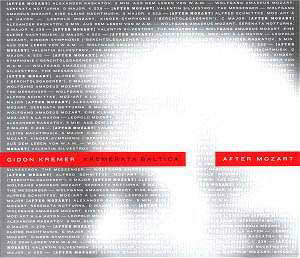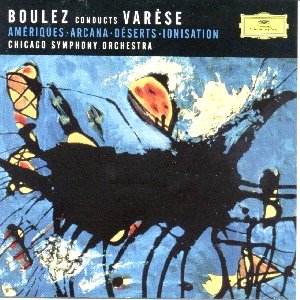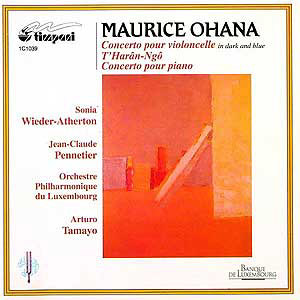 Composer: Maurice Ohana
Composer: Maurice Ohana
Works: Cello Concerto No. 2: “in dark and blue” (1990), T’Harân-Ngô for orchestra (1974), Piano Concerto (1981)
Performers: Sonia Wieder-Atherton (cello), Jean-Claude Pennetier (piano), Luxembourg Philharmonic Orchestra conducted by Arturo Tamayo
Recording: Luxembourg Conservatoire, 1997 DDD Stereo
Label: TIMPANI 1C1039
Maurice Ohana, a figure often overshadowed in the 20th-century musical landscape, emerges with renewed vigor in this compelling recording featuring his orchestral and concerto works. Born in Casablanca in 1914 and schooled in the European avant-garde, Ohana’s music is a rich tapestry woven from his diverse cultural experiences, reflecting influences from his Moroccan heritage, French academic training, and the avant-garde milieu of post-war Europe. This release serves as a valuable reassessment of Ohana’s oeuvre, showcasing his unique voice in a period characterized by radical experimentation and stylistic pluralism.
The Cello Concerto No. 2, “in dark and blue,” opens the disc with an emotional depth that is both lyrical and haunting. Performances such as this often hinge on how well the soloist interprets the work’s intricate demands, and Sonia Wieder-Atherton excels, navigating the challenging slides and tremolos with remarkable finesse. The orchestral fabric, while echoing influences from composers like Messiaen and Koechlin, possesses a distinct character marked by Ohana’s use of microtones and jazz-inflected motifs. The blues passage, which the subtitle references, serves as a poignant interlude, blending seamlessly into the contemplative textures that follow. Tamayo’s direction ensures that the orchestral colors are vividly realized, creating an immersive listening experience that rewards repeated hearings.
T’Harân-Ngô, composed in 1974, presents a stark contrast both in its radicalism and its vibrant energy. Here, Ohana’s eclecticism flourishes, drawing upon a myriad of influences from Ligeti to Stravinsky. The orchestration is replete with striking percussion and microtonal strings, crafting a soundscape that is both atmospheric and rhythmically complex. The programmatic elements, purportedly inspired by ethnic dances, may elude direct representation, but they contribute to the work’s dynamic character. The texture becomes increasingly adventurous, punctuated by ear-catching percussion that elevates the listener’s engagement. This piece, alongside the others, is captured in superb sound quality, allowing the intricate interplay of orchestral timbres to resonate clearly.
The Piano Concerto (1981) stands out as a provocative exercise in orchestral resonance. Pennetier’s opening solo, marked by a slow unfolding of chords, sets an introspective tone, though the orchestral response often seems disjointed. This juxtaposition evokes a comparison with Messiaen’s harmonic language, albeit with an added layer of unpredictability akin to Gershwin’s jazz-inflected romanticism. The lack of thematic coherence may challenge some listeners, as the concerto revels in an avant-garde ethos that prioritizes sonic exploration over conventional form. The engineering captures the concerto’s complexity well, but the decision to present the entire work on a single track complicates the listener’s ability to discern its four distinct movements, which could hinder a full appreciation of its structural ambitions.
Ohana’s music, as presented in this disc, resists easy categorization and demands an open-minded approach from its audience. The interpretative choices made by Wieder-Atherton and Pennetier are commendable, bringing forth the subtleties of Ohana’s language while demonstrating technical prowess. The overall sound quality enhances the experience, allowing the intricate details of the orchestration to shine. Though the broader question of Ohana’s standing among the greats of the 20th century remains subjective, this recording presents a persuasive case for his reconsideration. The disc invites both seasoned aficionados and curious newcomers to engage with Ohana’s multifaceted artistry, revealing a composer whose work is as intriguing as it is rewarding.
